Learning all the notes on a guitar fretboard is a foundational skill that unlocks true musical understanding and freedom on the instrument. While the seemingly vast expanse of the fretboard might appear daunting at first, grasping the layout of notes is more accessible than you might think. With a structured approach and consistent practice, you can confidently navigate every note on your guitar.
The Natural Musical Alphabet: Your Starting Point
Music theory, in its basic form, begins with a simple alphabet. Unlike the ABCs you learned in school, the musical alphabet consists of only seven natural notes: A, B, C, D, E, F, and G. These are considered “natural” because they don’t include sharps or flats. Think of these seven notes as the fundamental building blocks upon which all other notes are based. Understanding this sequence is the first step to mapping out All Notes On A Guitar.
 The Musical Alphabet
The Musical Alphabet
Alt text: The seven natural notes of the musical alphabet displayed as A, B, C, D, E, F, and G, forming a cyclical sequence.
Sharps and Flats: Expanding Your Note Vocabulary
Sharps (♯) and flats (♭) are the notes that reside in between the natural notes, creating a chromatic scale. They represent half-step intervals, which are the smallest increments of pitch in Western music.
A sharp (♯) raises a natural note by a half-step. For example, A sharp (A♯) is a half-step higher in pitch than A. Conversely, a flat (♭) lowers a natural note by a half-step. A flat (A♭) is a half-step lower than A.
It’s important to realize that some notes can be named in two ways – as either a sharp or a flat. For instance, the note between D and E can be called D sharp (D♯) when moving upwards from D, or E flat (E♭) when moving downwards from E. The specific name often depends on the musical context and key being used.
 Sharps & Flats
Sharps & Flats
Alt text: Diagram illustrating sharps as a half-step up and flats as a half-step down from natural notes on a musical staff.
Quick Tip: To easily remember flats, think of something “flattened” or lowered. Sharps, on the other hand, are a “step up” from the natural note.
The BC and EF Rule: Natural Half-Steps
An essential rule to remember when navigating all notes on a guitar is the “BC and EF rule.” This rule states that there are natural half-steps between the note pairs B and C, and E and F. This means there is no sharp or flat note in between them. Moving up a half-step from B leads directly to C, and moving down a half-step from F leads directly to E. All other natural notes are separated by a whole step, which accommodates a sharp or flat note in between.
Open String Names: Your Fretboard Anchors
In standard guitar tuning, the six strings, from thickest to thinnest, are tuned to the notes E, A, D, G, B, and E. These open string notes are your primary reference points for learning all notes on a guitar fretboard. When you play a string without pressing down on any fret, you are playing its open string note. Notice that the lowest (thickest) and highest (thinnest) strings are both tuned to E, which simplifies memorization as you learn notes across the fretboard.
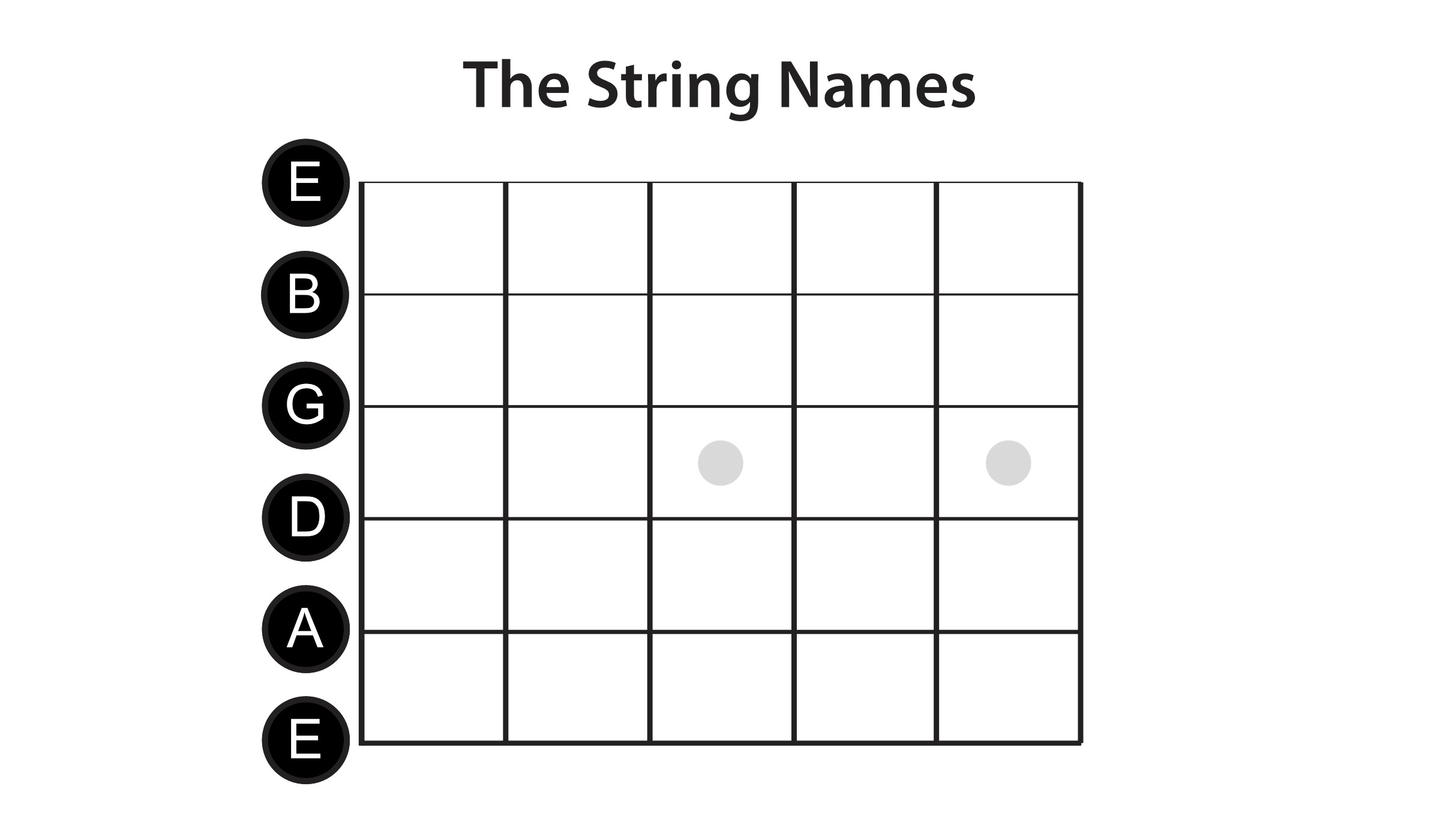 Guitar String Names
Guitar String Names
Alt text: Visual representation of a guitar headstock showing standard tuning string names E, A, D, G, B, E from thickest to thinnest string.
Ascending the Fretboard: Counting in Half-Steps
Once you know your open string notes and the musical alphabet, you can start to find all notes on a guitar fretboard by counting up in half-steps. Each fret on the guitar represents a half-step. Moving from the open string towards the guitar body, each fret increases the pitch by a half-step. Remember to apply the BC and EF rule as you ascend.
Let’s explore the notes on each string, fret by fret:
Low E String Notes:
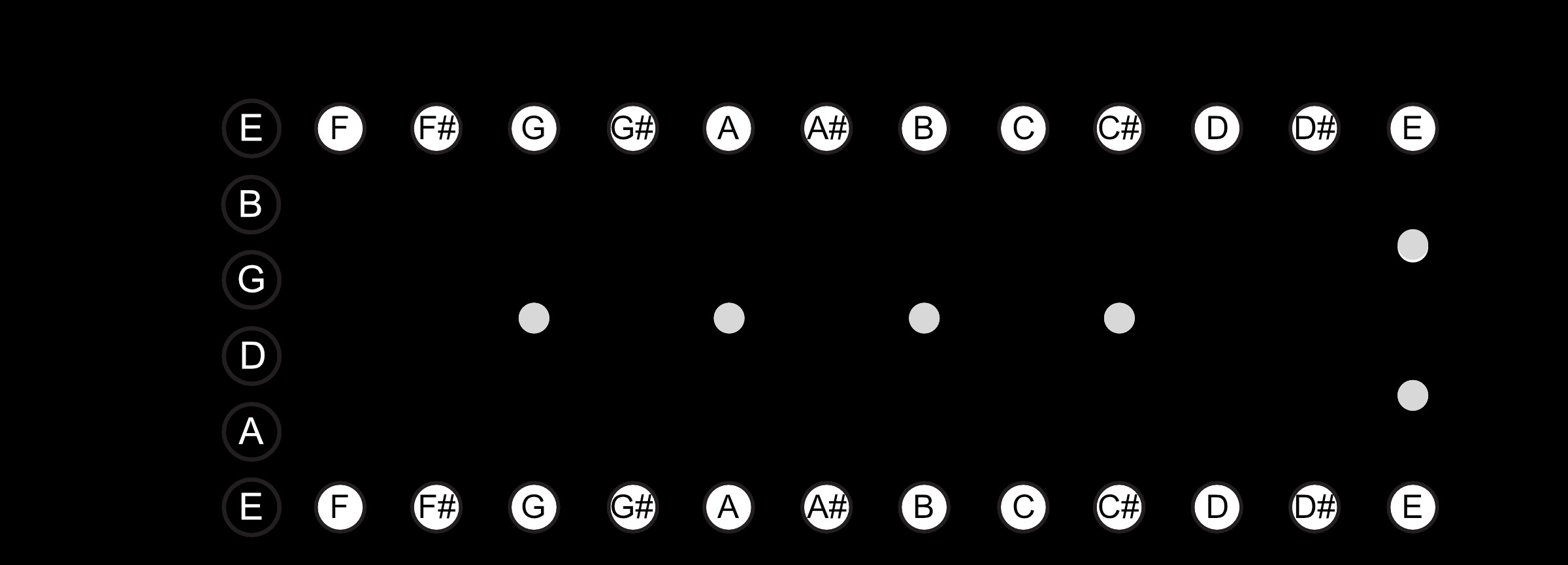 E String Note Names
E String Note Names
Alt text: Fretboard diagram highlighting the low E string and displaying note names from open E to the 12th fret E.
Starting from the open E string, the notes ascend as follows: F (1st fret), F♯/G♭ (2nd fret), G (3rd fret), G♯/A♭ (4th fret), A (5th fret), A♯/B♭ (6th fret), B (7th fret), C (8th fret), C♯/D♭ (9th fret), D (10th fret), D♯/E♭ (11th fret), E (12th fret).
A String Notes:
 A String Note Names
A String Note Names
Alt text: Fretboard diagram emphasizing the A string with note names from open A to the 12th fret A.
Starting from the open A string: A♯/B♭ (1st fret), B (2nd fret), C (3rd fret), C♯/D♭ (4th fret), D (5th fret), D♯/E♭ (6th fret), E (7th fret), F (8th fret), F♯/G♭ (9th fret), G (10th fret), G♯/A♭ (11th fret), A (12th fret).
D String Notes:
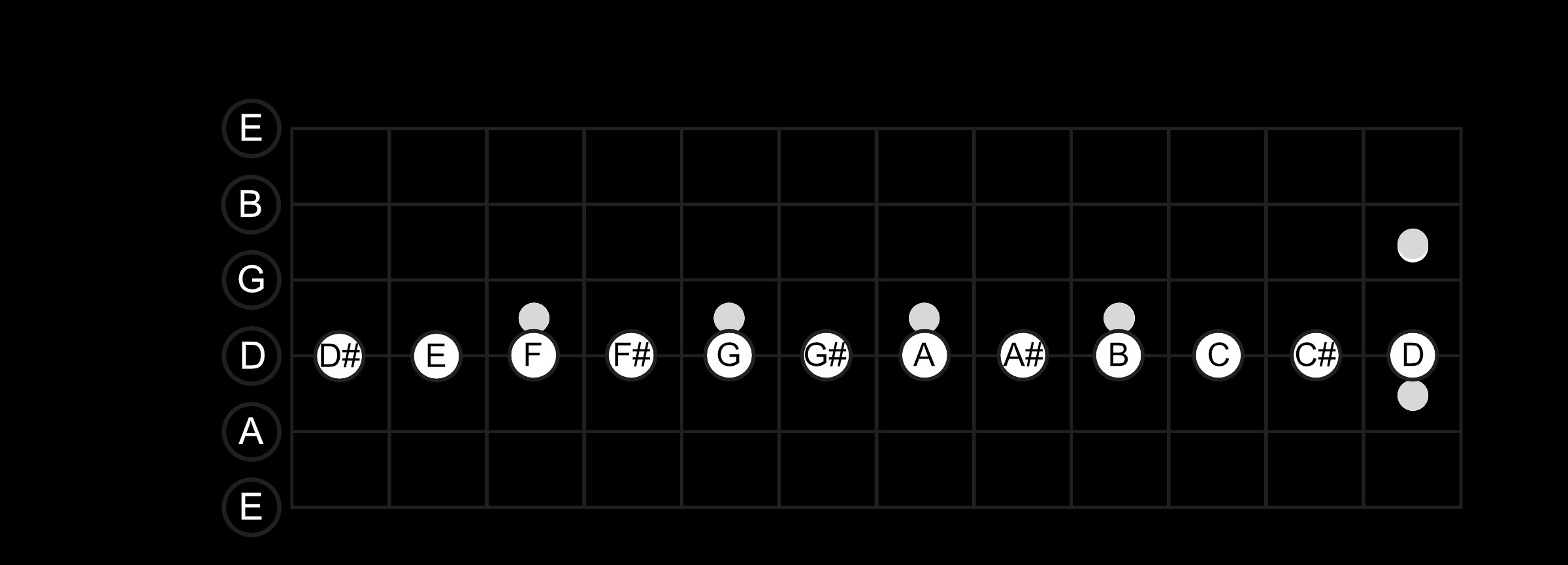 D String Note Names
D String Note Names
Alt text: Fretboard diagram focusing on the D string displaying notes from open D to the 12th fret D.
Starting from the open D string: D♯/E♭ (1st fret), E (2nd fret), F (3rd fret), F♯/G♭ (4th fret), G (5th fret), G♯/A♭ (6th fret), A (7th fret), A♯/B♭ (8th fret), B (9th fret), C (10th fret), C♯/D♭ (11th fret), D (12th fret).
G String Notes:
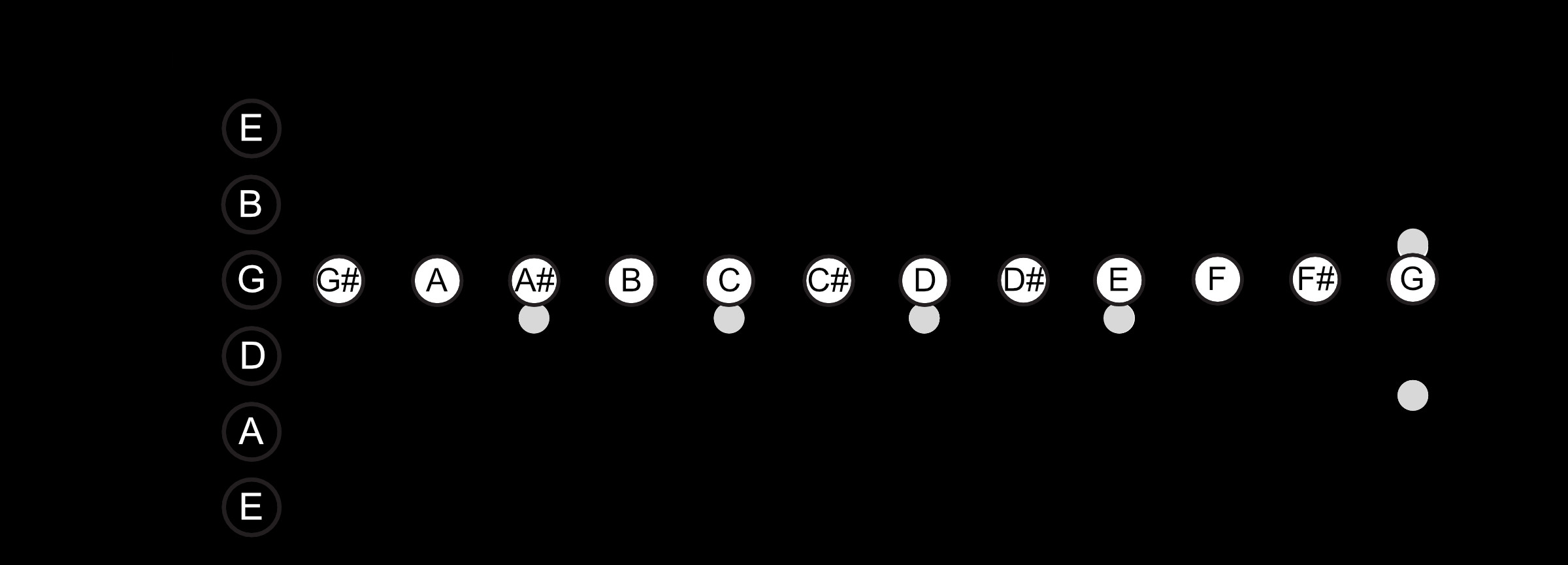 G String Note Names
G String Note Names
Alt text: Fretboard diagram highlighting the G string and showing note names from open G to the 12th fret G.
Starting from the open G string: G♯/A♭ (1st fret), A (2nd fret), A♯/B♭ (3rd fret), B (4th fret), C (5th fret), C♯/D♭ (6th fret), D (7th fret), D♯/E♭ (8th fret), E (9th fret), F (10th fret), F♯/G♭ (11th fret), G (12th fret).
B String Notes:
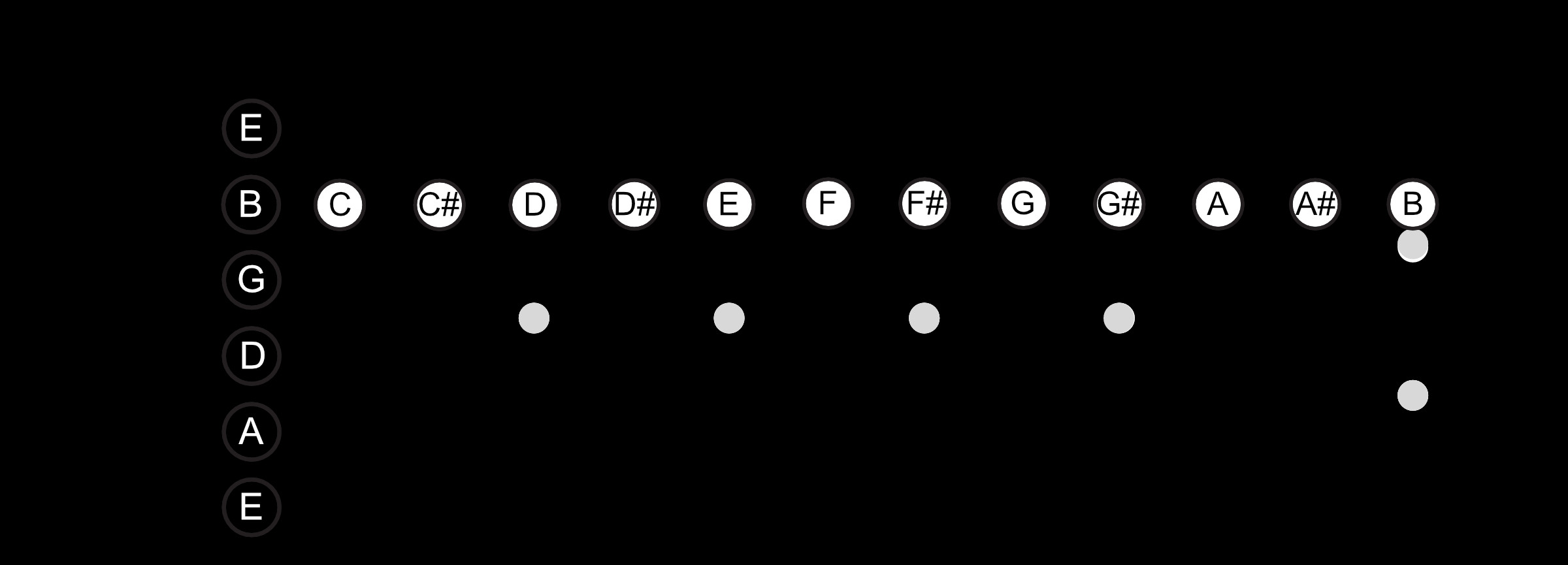 B String Note Names
B String Note Names
Alt text: Fretboard diagram emphasizing the B string and displaying note names from open B to the 12th fret B.
Starting from the open B string: C (1st fret), C♯/D♭ (2nd fret), D (3rd fret), D♯/E♭ (4th fret), E (5th fret), F (6th fret), F♯/G♭ (7th fret), G (8th fret), G♯/A♭ (9th fret), A (10th fret), A♯/B♭ (11th fret), B (12th fret).
The 12th Fret Octave: Fretboard Repetition
Here’s a fantastic shortcut to learning all notes on a guitar: the notes on the fretboard repeat every 12 frets! The note at the 12th fret is the same note name as the open string, but an octave higher. For example, on the B string, the open string is B, and the note at the 12th fret is also B. This means you only need to truly learn the notes within the first 12 frets. Fret 13 will be C, just like fret 1, fret 14 will be C♯/D♭, like fret 2, and so on. This significantly reduces the amount of memorization needed.
Octave Shapes: Connecting Notes Across Strings
Another effective method for mastering all notes on a guitar is understanding octave shapes. Octaves are notes that share the same name but are at different pitch levels. Recognizing octave patterns helps you quickly locate the same note in different positions across the fretboard. Octave shapes are consistent and transferable, making fretboard navigation much more intuitive.
One common octave shape uses the E and D strings as a reference. For example, to find a G note on the D string, you can locate the G on the E string and then find its octave on the D string using the shape shown below.
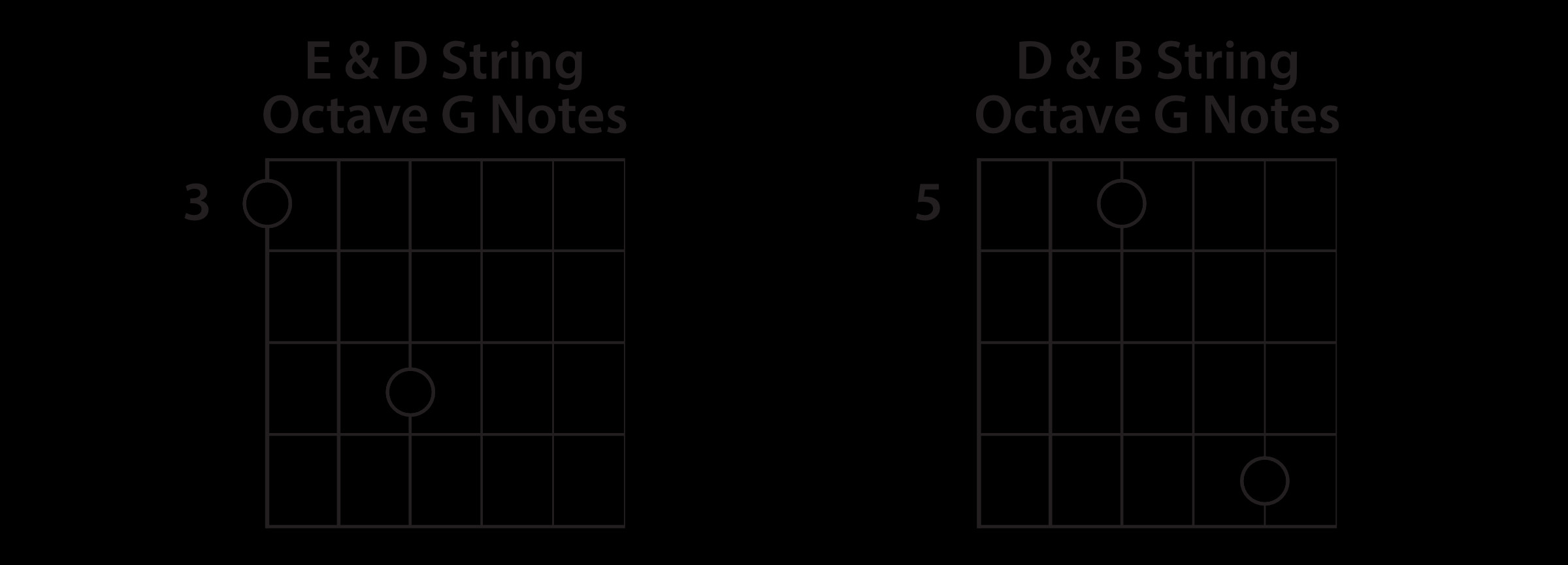 E & D String Octave Centers
E & D String Octave Centers
Alt text: Diagram illustrating an octave shape connecting the E string and D string, demonstrating how to find octave equivalents.
Similarly, you can use the A string as a reference to find notes on the G string, and then use the G string to find notes on the high E string, utilizing another consistent octave shape.
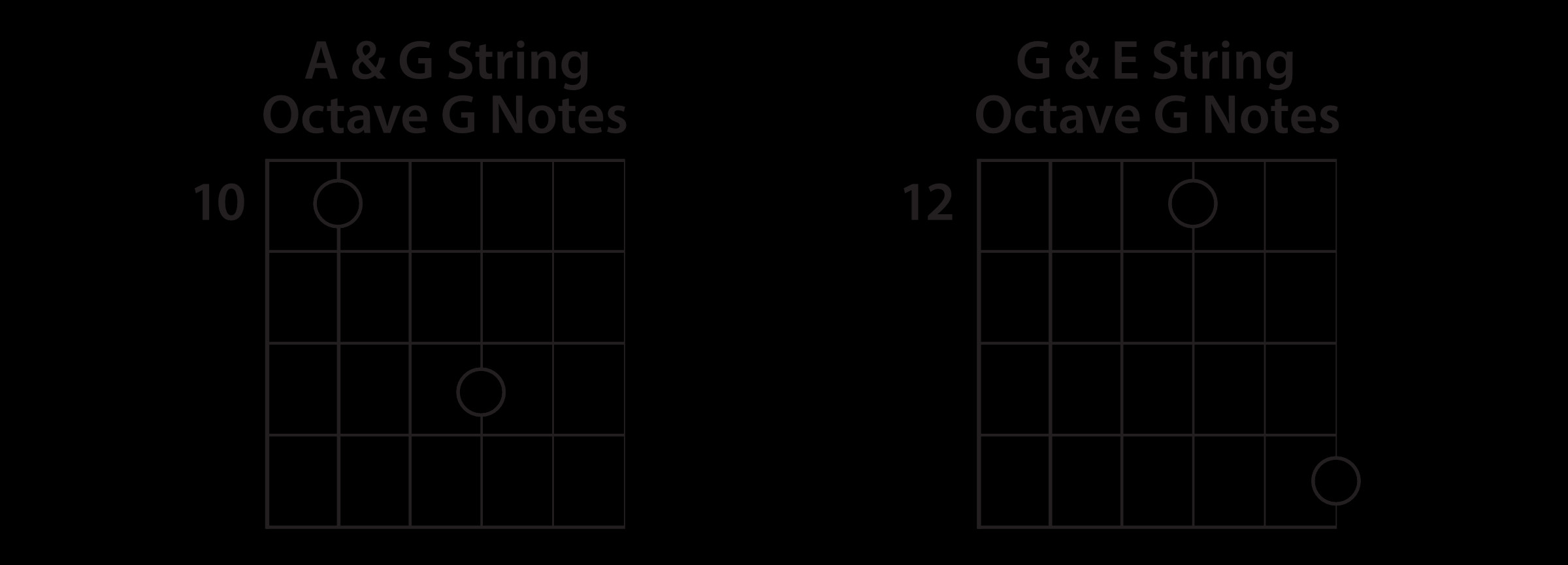 A & G String Octave Centers
A & G String Octave Centers
Alt text: Diagram demonstrating an octave shape linking the A string and G string, showing the pattern for octave displacement.
Practical Steps to Fretboard Mastery
To truly internalize all notes on a guitar, consistent practice is key. Here are some actionable steps:
- Focus on the E and A strings: Start by memorizing all notes on the low E and A strings up to the 12th fret. These strings serve as anchors for finding notes across the rest of the fretboard.
- Practice note recognition drills: Use fretboard diagrams or apps to quiz yourself on note names in different positions.
- Play scales and arpeggios: As you practice scales and arpeggios, consciously call out the note names as you play them. This reinforces note recognition in a musical context.
- Learn songs and melodies: When learning new songs, actively identify the notes you are playing.
- Use octave shapes: Practice identifying and playing octave shapes across different string sets.
Conclusion: Unlock Your Guitar Potential
Mastering all notes on a guitar fretboard is an investment that pays off immensely. It enhances your understanding of music theory, improves your improvisation skills, and ultimately gives you greater freedom and confidence in your playing. Start with the fundamentals, practice consistently, and you’ll soon find yourself effortlessly navigating all corners of your fretboard. Embrace the journey, and enjoy the expanded musical landscape that awaits you!

